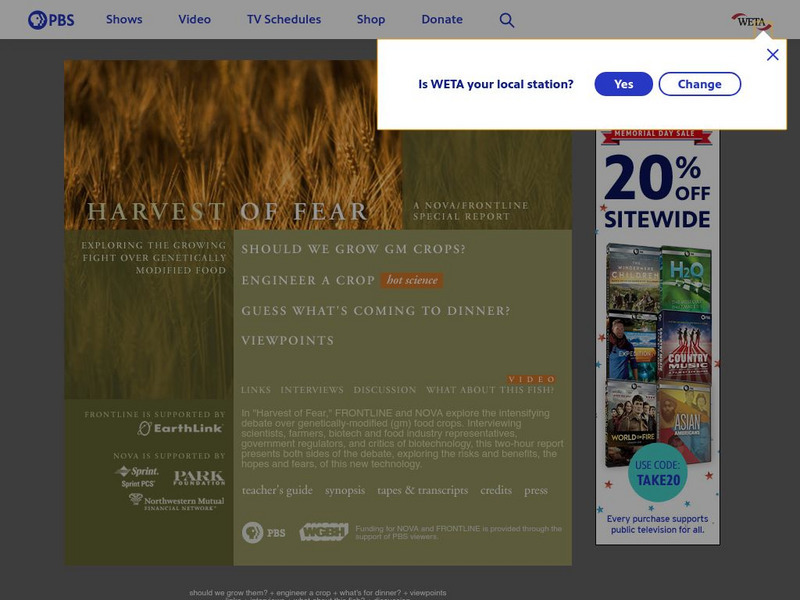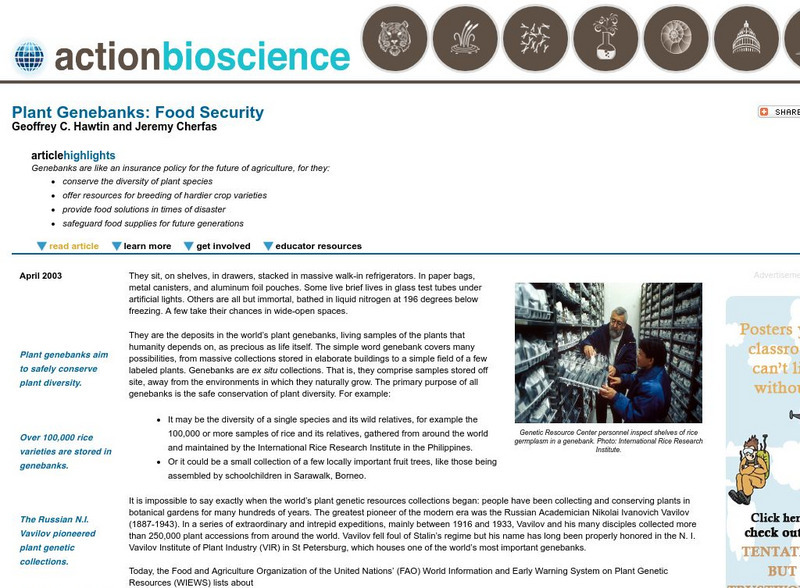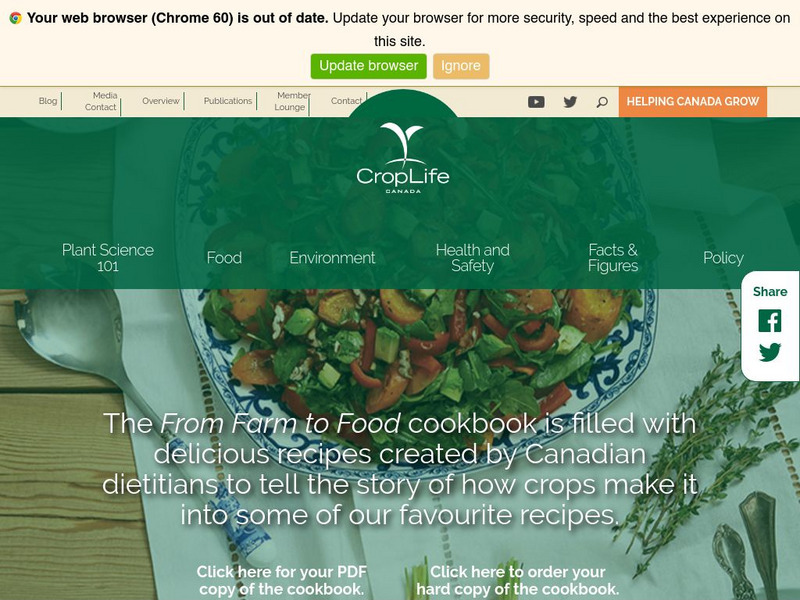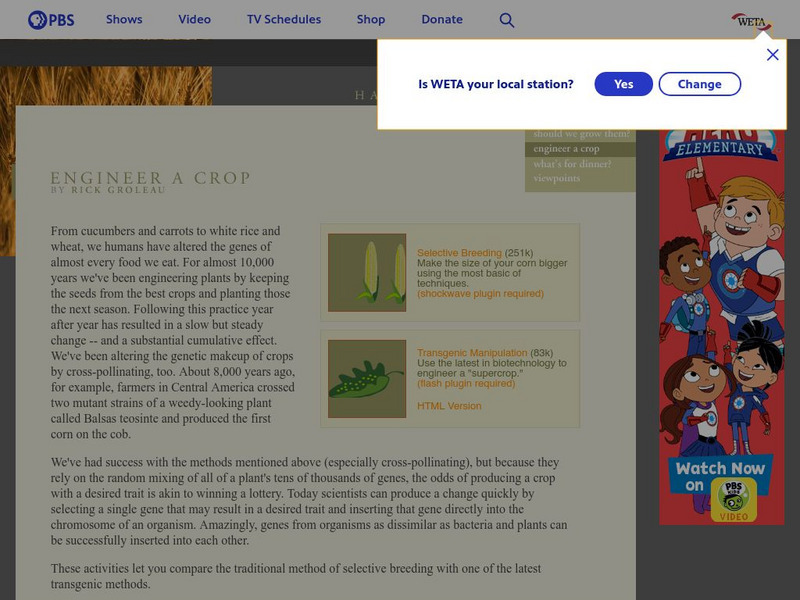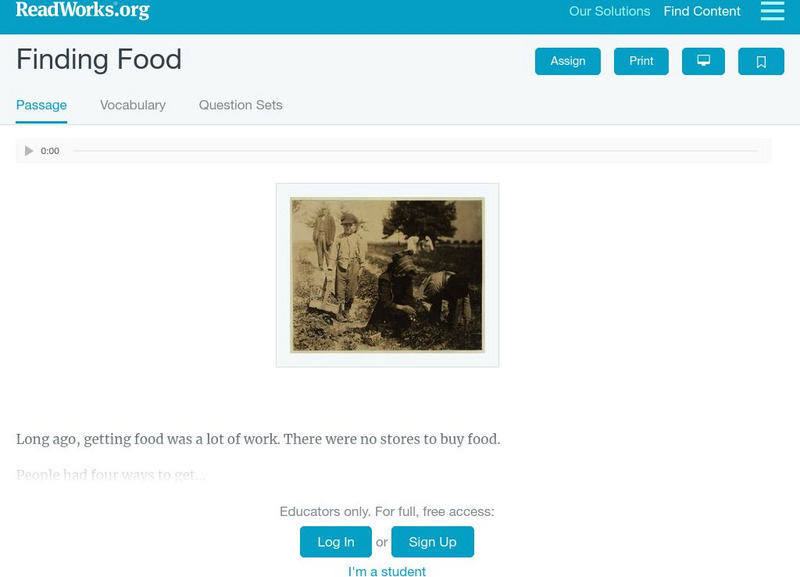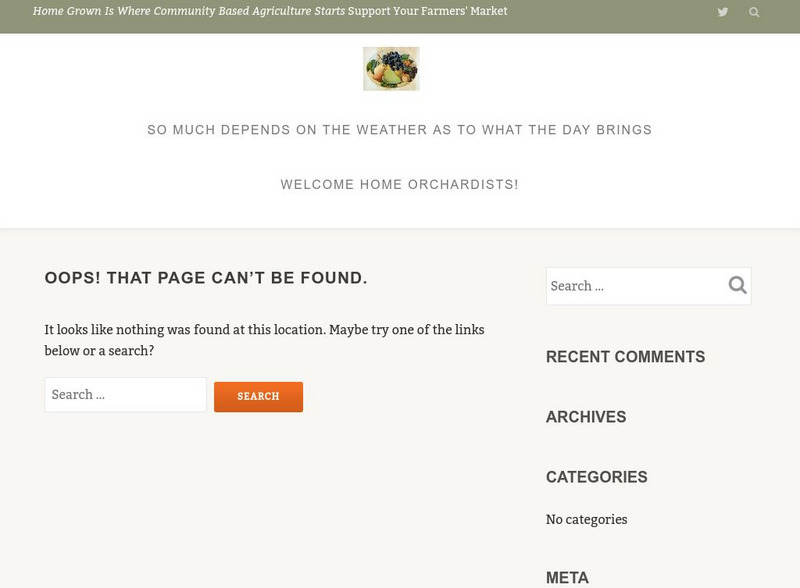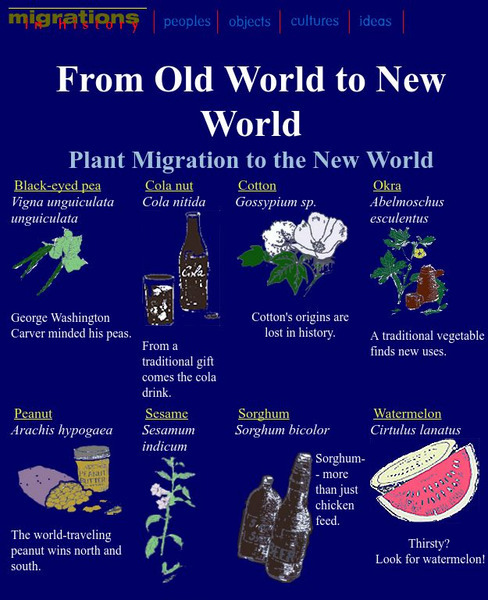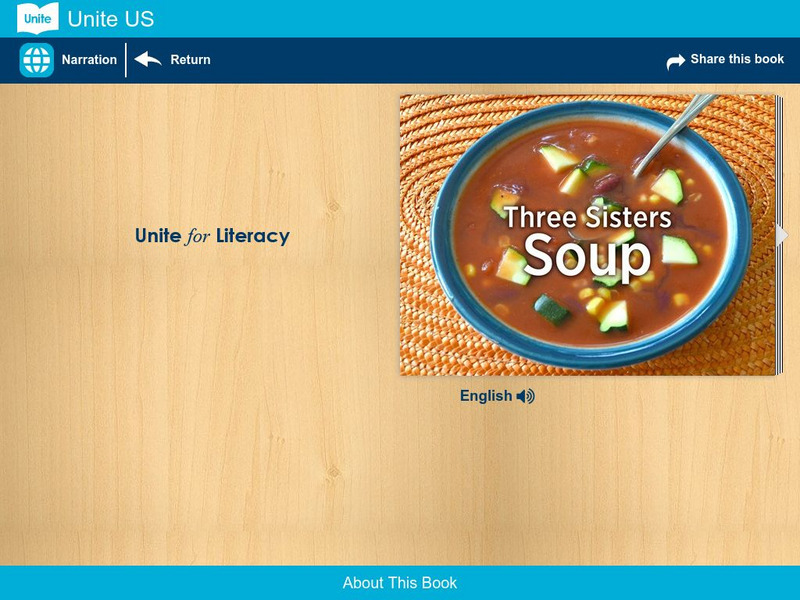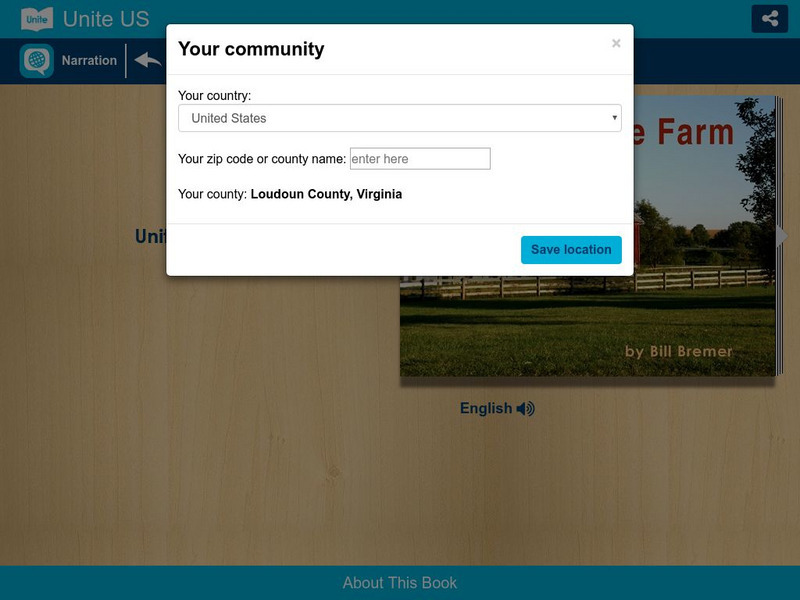National Geographic
National Geographic: Staple Food Crops of the World
An interactive map identifying where many of the staple foods are grown around the world. In addition, find questions that can be answered based on review of the maps, fast facts about the crops, and terminology.
Biotechnology Institute
Biotechnology Institute: Your World: Genetically Modified Food Crops [Pdf]
This issue of Your World will help students unravel conflicting reports about agricultural biotechnology. Is it safe and environmentally friendly or an out-of-control experiment? Students will learn how plants with specific traits are...
A&E Television
History.com: 7 Foods Developed by Native Americans
These seven dietary staples were cultivated over thousands of years by Indigenous peoples of America. While Indigenous diets and foodways were deeply impacted by European settlement, Indigenous American foods also changed the world....
PBS
Frontline and Nova: Harvest of Fear
Review the risks, benefits, hopes, and fears associated with biotechnology and bioengineered food crops. Find in-depth interviews with genetic scientists, food industry representatives, farmers, and critics of biotechnology. Accompanying...
Science Buddies
Science Buddies: Project Ideas: Hidden Grasses and Beans in Processed Foods
In this cooking and food science fair project, determine which common crops are found most often in processed foods. The Science Buddies project ideas are set up consistently beginning with an abstract, objective, and introduction,...
American Institute of Biological Sciences
Action Bioscience: Plant Genebanks: Food Security
Over time everything changes a little bit, just take a look at the theory of evolution. With the descent of biodiversity agriculturalists have developed a system using genebanks to maintain the crops that sustain the majority of the...
Georgia Department of Education
Ga Virtual Learning: Ap Environmental Science: Food Production and Pesticides
Through videos, interactive activities, and readings, students explore the future of food production and sustainability of our current agricultural system.
University of Groningen
American History: Essays: Anglo Amer. Colonization in Texas: Food Production
Describes the role Texas played in trading food crops in the mid-1800s.
Other
Crop Life Canada
Covers a wide variety of issues from pestcide facts and history to food safety and human health. This organization is involved in all aspects of industry-wide education, communication, legislation, regulation to protecting Canada's...
Other
Soil Association: Food for Life Curriculum Pack [Pdf]
A curriculum focusing on food production and consumerism.
PBS
Nova: Engineering a Crop
This interactive simulation allows you to compare selective breeding with transgenic manipulation to see which one produces a better crop.
Countries and Their Cultures
Countries and Their Cultures: Gusii
The Gusii are divided into seven clan clusters: Kitutu (Getutu), North Mugirango, South Mugirango, Majoge, Wanjare (Nchari), Bassi, and Nyaribari. Gusiiland is located in western Kenya, 50 kilometers east of Lake Victoria. Since...
Countries and Their Cultures
Countries and Their Cultures: Iraqw
The Iraqw are an agrico-pastoral people who live in north-central Tanzania. With the expansion of their territory, the Iraqw have come to interact and coexist with other ethnic groups. Maize is the staple crop of the Iraqw; it is...
PBS
Pbs Learning Media: Engineer a Crop: Transgenic Manipulation
You're the geneticist now. In this interactive feature developed for the companion Web site for NOVA/FRONTLINE: "Harvest of Fear," use the latest in genetic technology to engineer your own "supercrop" of tomatoes.
Other
Dna for Dinner?
This WebQuest is designed to help students answer the question, "Should genetically modified food crops be specifically labeled for consumers and why? In answering this questions students will also draft a law and explain their...
Read Works
Read Works: Finding Food
[Free Registration/Login Required] This nonfiction passage discusses how obtaining food was challenging in the past. This passage is a stand-alone curricular piece that reinforces essential reading skills and strategies and establishes...
Other
Fruit From Washington: Crop Harvests at Home in America in World War Ii
This site is filled with posters from World War II, the Great Depression, and World War I which encouraged using food wisely, growing victory gardens, and helping harvest the crops on commercial farms.
PBS
Now With Bill Moyers: Genetically Modified Foods
Learn about genetically-engineered foods, then research and report how genetic engineering is done. Investigate the pros and cons related to genetically engineered crops, and express one's own feelings on the topic.
PBS
Pbs Learning Media: Should We Grow Gm Crops?
Learn the pros and cons of genetically modified (GM) crops, and cast your vote on whether they should be grown. From the FRONTLINE/NOVA: Harvest of Fear Web site.
PBS
Pbs Learning Media: Welcome to City Farm
You're in charge of an urban farm and need to run the farm sustainably for 5 years. Play this interactive game and learn about sustainable practices by growing crops, protecting them against unforeseen problems, and determining how best...
Biotechnology Institute
Biotechnology Institute: Your World: Plant Biotechnology [Pdf]
As humans try to reach the goal of growing enough food to feed all the people, find out how biotechnology is used to help.
Smithsonian Institution
Smithsonian Education: From Old World to New World
Plants have migrated around the world just like people. This site explains how several African plants and food crops made their way into American life.
Unite for Literacy
Unite for Literacy: Plants and Food: Three Sisters Soup
Read about how the three sisters - beans, corn, and squash - act as companion plants to support each other's growth. Includes audio narration in English and Turkish with text in English.
Unite for Literacy
Unite for Literacy: Plants and Food: Fresh From the Farm
Read about some of the products we get from farms. Includes audio narration in English, Spanish, and Turkish with text in English.

![Biotechnology Institute: Your World: Genetically Modified Food Crops [Pdf] Article Biotechnology Institute: Your World: Genetically Modified Food Crops [Pdf] Article](https://d15y2dacu3jp90.cloudfront.net/images/attachment_defaults/resource/large/FPO-knovation.png)
